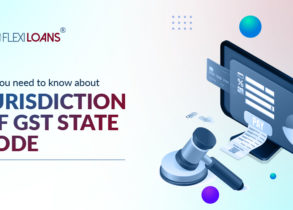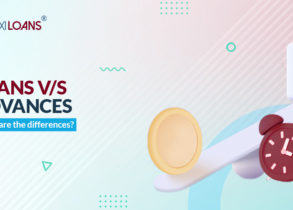Aug 22, 2023
Jun 26, 2025

Getting a loan is like taking a big step toward reaching your financial goals. Whether you want to start a business, invest in inventories, pay for staff salaries, or handle everyday business expenses, loans can help. But before you get a loan, lenders will carefully examine your business loan eligibility, financial history, and how good you are with money.
The application process can be long and tiring, with many documents required for a loan without any rhyme or reason. There is a huge confusion and a lot of time is wasted asking questions and searching for documents online. To eliminate this problem, here is a detailed checklist that includes all the required documents for business loan types.
1. Business Loan
A business loan can boost capital and comes in customised forms to assist your firm in meeting various financial requirements. Every business structure requires funds for its growth, and getting an unsecured business loan is not an easy task. Processing a business loan is a time-consuming and tedious task, given the number of documents required and the necessary regulations.
Business loan eligibility depends on factors such as your company’s financial standing, operational years since establishment, market credibility, and business type. Here’s a list of business loan paperwork requirements that you will need to submit.
Business Loan Documents Checklist:
- Business Plan: A detailed plan outlining your business model, strategy, financial projections, and how you will use the funds.
- Proof of Business: Business registration documents, licences, permits, and any relevant legal agreements. For example, if you own a restaurant, you will need an FSSAI License and a Certificate of Environmental Clearance.
- Financial Statements: Recent audited or unaudited balance sheets, profit and loss statements, and cash flow statements.
- Personal Identification: Identity proof, address proof, and PAN card copies of all promoters or partners.
- Collateral Documents: If the loan requires collateral, documents related to the collateral’s ownership and value assessment.
- Bank Statements: Business bank statements for the last six months to demonstrate the cash flow and business loan eligibility.
- Tax Returns: IT returns of the business and individual promoters or partners for the previous two to three years.
Mistakes to Avoid
- Inadequate Business Plan: A vague or incomplete business plan can raise doubts about your loan repayment ability
- Overlooking Collateral Evaluation: Failing to assess the collateral’s value properly might affect your business loan amount.
Utilisation Areas:
- Starting or Expanding Business: Use the funds for business setup, equipment purchase, or expanding operations.
- Working Capital Management: Meet day-to-day operational expenses, manage inventory, or bridge cash flow gaps.
2. Line of Credit
A business line of credit is like a flexible loan that a company can use when needed. It is like having money in a virtual wallet for emergencies, opportunities, or regular expenses. You can borrow up to a specific limit and only pay interest on the amount you use. Here is the list of documents required for loan approval.
Line of Credit Documents Checklist
- Financial Statements: Recent balance sheets, income, and cash flow statements.
- Collateral: Details on any assets you can use as security for the line of credit.
- Bank Statements: Recent business bank statements showing your cash flow.
- Legal Documentation: Business licenses, tax identification numbers, legal structure details
- Bank Statements: Recent business bank statements showing your cash flow.
Mistakes to Avoid:
- Not Reading Terms: Understand repayment terms and any hidden fees.
- Mixing Personal and Business Expenses: Keep them separate to avoid confusion.
- Not Shopping Around: Compare offers from different lenders for the best deal.
- Missing Repayment Planning: Have a strategy to pay back what you borrow.
Utilisation Areas:
- Working Capital: Cover day-to-day expenses during slow periods.
- Inventory Purchases: Seize discounts or manage seasonal demands.
- Emergency Funds: Handle unexpected costs without disrupting operations.
- Short-Term Projects: Fund new ventures or special projects.
3. Loan Against POS
Under this small business loan, you can borrow funds using your daily credit card transactions as a guarantee. Lenders assess your average card sales and offer you a lump sum accordingly. The repayment process of this business loan stands out as it links to your future sales. That means an automated deduction of a percentage occurs from each transaction to cover the loan amount.
The business loan eligibility for this product is a minimum monthly sale of Rs 1,00,000 and a vintage of at least a year.
Loan Against POS Document Checklist
- Personal KYC: Submit PAN card
- Residential Proof: Furnish driver’s license, passport, rent agreement, ration card, Aadhar card, and voter’s ID
- Banking: Business current account statement for the previous six months displaying card transaction settlement
- Business KYC: Submit either shop or establishment certificate or GST registration
- Financial Documents: If you are applying for a loan of above Rs 10,00,000, the previous two years’ income tax returns, six months’ GST returns, and audited financials are necessary.
Mistakes to Avoid:
- Not Planning for Slow Periods: Failing to consider seasonal or slow business periods could impact your ability to repay consistently.
- Ignoring Fees: Be aware of any charges like prepayment penalties.
Utilisation Areas:
- Product development and prototyping.
- Marketing and branding efforts.
4. MSME Loans
“MSME” stands for “Medium & Small Enterprises.” MSME loans are especially for firms with at least Rs 2,00,000 monthly sales. The business owner’s age should fall within the range of 21 to 65 years, and the minimum operational period for the business must be at least three years to qualify for this loan. You can get an MSME business loan by furnishing the following documents:
MSME Loans Documents Checklist
- Personal KYC: Provide driver’s license, rent agreement, passport, voter ID, Aadhar card, or ration card
- Banking details: Submit a bank account statement that reflects your company’s cash flow for the previous six months.
- Business KYC: Submit either shop or establishment certificate or GST registration
- Financial documents: Submit an audited balance sheet, GST returns for the previous six months, and ITR for the last two years.
Mistakes to Avoid:
- Inadequate Assessment: Don’t underestimate the capital needs of your business.
- Underestimating Cash Flow: Relying solely on loans to address funding issues without implementing effective cash management strategies can increase the problem.
Utilisation Areas:
- Inventory Management: Purchase inventory or raw materials.
- Operational Expenses: Cover day-to-day expenses like wages and utilities.
5. Vendor Financing
Vendor financing is when a company helps you buy their product or service by offering you a way to pay over time instead of all at once. This can be super useful, as you don’t have to block your revenue or profit and can use it towards other areas in your business. Now, let’s understand the documents required for loan approval of vendor finance.
Vendor Finance Documents Checklist
- Identification: Your ID or driver’s license.
- Business Proof: GST Registration or shop or establishment certificate
- Income Proof: Documents showing your business’s earnings.
- Credit History: Info on your past credit and loans.
- Business Details: Description of your company.
- Financial Statements: Like balance sheets, cash flow, or income statements.
- Purchase Info: Details about what you are buying.
- Bank Statements: Showing your business finances.
Mistakes to Avoid:
- Overlooking Penalties: Late payments might lead to extra fees and impact your credit.
- Not Understanding Terms: Hidden clauses can result in unexpected charges.
- Overborrowing: Only secure financing for what your business truly needs to prevent debt overload.
- Neglecting Fine Print: Thoroughly read the agreement to avoid surprises or misunderstandings.
Utilisation Areas:
- Equipment Purchase: Acquire necessary machinery without upfront costs.
- Technology Upgrades: Invest in new software or hardware for improved efficiency.
- Inventory Expansion: Stock up on goods to meet growing demand.
Acquiring a loan is a significant financial decision and the documentation process plays a pivotal role in the approval process. By following this comprehensive checklist and avoiding common mistakes, you can streamline your loan application and make informed choices. Remember, each loan type serves specific purposes. Understanding how to utilise the funds effectively can lead you toward achieving your financial aspirations. Make sure to compare different business loan options.
If you are looking for loan options, we hope this helped make sure you have all of the documents you need to complete your application. To learn more about FlexiLoans and our business loan eligibility requirements, you can contact us right away.
Read More:
Documents required for Business Loan in India
Unsecured Business Loan Eligibility Criteria
How To Organize And Submit Documents For Business Loan Approval?
Deprecated: Function get_the_author was called with an argument that is deprecated since version 2.1.0 with no alternative available. in /var/www/html/wordpress/flexiloans.com/blog/wp-includes/functions.php on line 6114
Deprecated: Function get_the_author was called with an argument that is deprecated since version 2.1.0 with no alternative available. in /var/www/html/wordpress/flexiloans.com/blog/wp-includes/functions.php on line 6114







